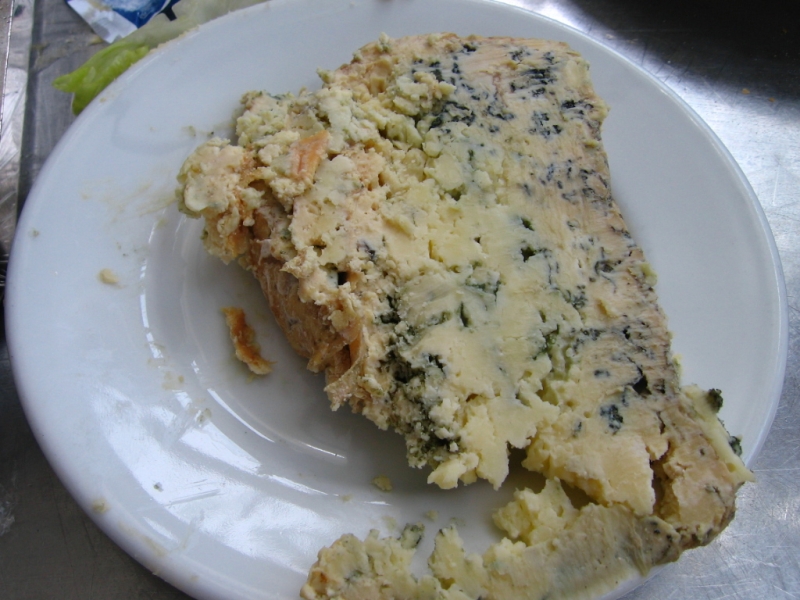Cabrales: Asturias’ Iconic Blue Cheese

Cabrales is a strong blue cheese from the Principality of Asturias in northern Spain. Known for its intense flavour and distinct aroma, it is a product protected by Denomination of Origin (DOP) status, which regulates how and where it can be produced.
For those living in or visiting northern Spain—particularly the Picos de Europa region—Cabrales is a prominent part of local gastronomy and frequently appears in markets, menus, and food festivals.
What Is Cabrales Cheese?
Cabrales is a blue-veined, semi-soft cheese traditionally made from:
- Raw cow’s milk
- Or a blend of cow, goat, and sheep’s milk (seasonal)
- Matured in limestone caves, where humidity and temperature are ideal for mould development
Its greenish-blue marbling comes from Penicillium mould, which forms naturally in the high-humidity environment of the caves. The final product has a strong, tangy flavour and a creamy but crumbly texture.
Where Is It Made?
Cabrales is produced in a limited area of eastern Asturias, specifically in:
- The municipality of Cabrales
- Parts of Peñamellera Alta
Only cheeses aged in natural caves within this zone may carry the DOP Cabrales label. These caves are usually located at altitudes between 800 and 1,200 metres.
How Is Cabrales Made?
- Milk Collection
Milk is sourced from animals grazing in mountain pastures. In summer, some producers move livestock to high-altitude meadows (brañas) to improve milk quality. - Coagulation and Curdling
Natural rennet is added to raw milk. Once curdled, the curd is cut and drained. - Salting and Moulding
The cheese is hand-moulded and salted. No external rind is formed—Cabrales develops a natural crust. - Aging in Caves
The cheese is aged for a minimum of 2 months (more commonly 4–6) in mountain caves. The caves’ natural conditions encourage the development of blue veins throughout the cheese.
Flavour Profile
Cabrales is:
- Strong and sharp
- Salty, with a distinct aftertaste
- Creamy and spreadable when at room temperature
The flavour intensifies with age and when goat or sheep milk is included in the blend.
How to Use Cabrales
Cabrales is versatile and used in:
- Sauces for meat or pasta (salsa de Cabrales)
- Spread on bread or crackers
- Eaten alone, often with cider or strong red wine
- Melted over grilled meats or vegetables
Because of its strength, it’s often served in small portions.
Where to Buy It
Cabrales is available in:
- Local markets throughout Asturias
- Specialist cheese shops in Spain
- Supermarkets, typically in vacuum-sealed wedges
For the best quality, look for the official DOP seal and check the ingredients (single vs. mixed milk).
Storage and Shelf Life
- Keep refrigerated and well wrapped to avoid odour transfer
- Use within a few weeks of purchase
- Bring to room temperature before serving for best texture and flavour
Summary
Cabrales cheese is a protected regional product with a strong identity rooted in the geography and traditions of Asturias. For property buyers, expats, or long-term visitors in northern Spain, it represents one of the most recognisable and distinctive local foods. Whether enjoyed with fresh bread or used in sauces, Cabrales is a bold introduction to the region’s culinary heritage.
![]()